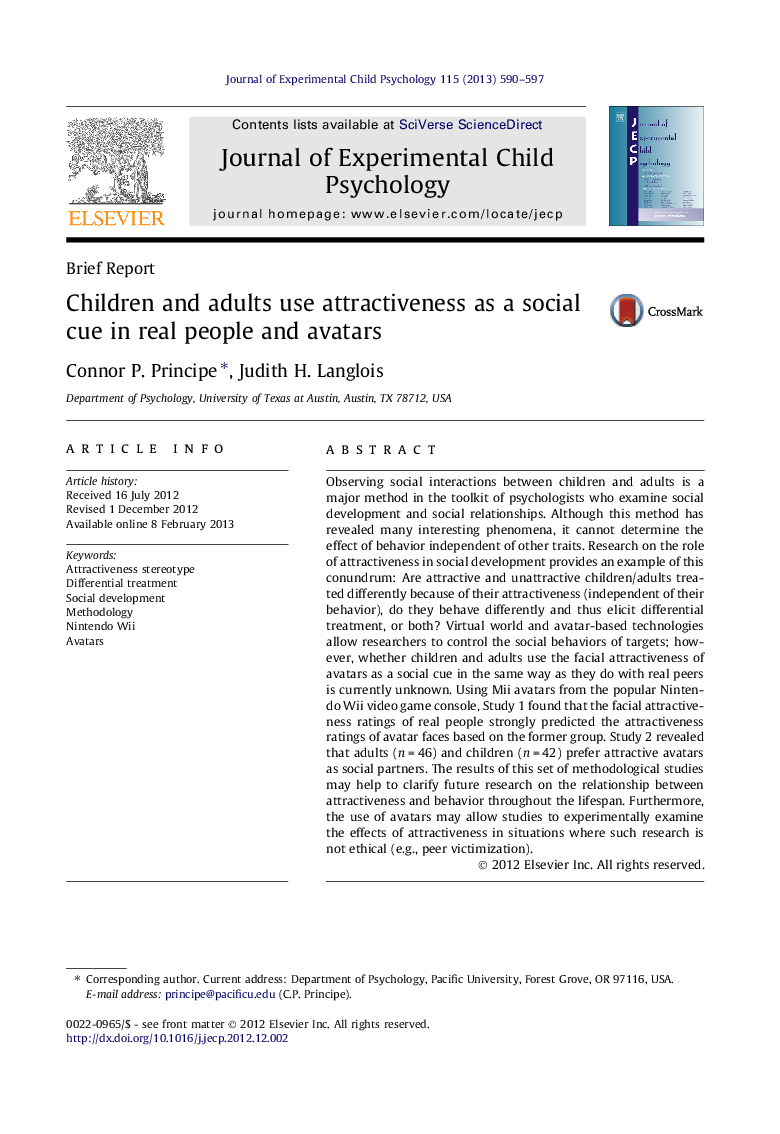| کد مقاله | کد نشریه | سال انتشار | مقاله انگلیسی | نسخه تمام متن |
|---|---|---|---|---|
| 918142 | 919454 | 2013 | 8 صفحه PDF | دانلود رایگان |

Observing social interactions between children and adults is a major method in the toolkit of psychologists who examine social development and social relationships. Although this method has revealed many interesting phenomena, it cannot determine the effect of behavior independent of other traits. Research on the role of attractiveness in social development provides an example of this conundrum: Are attractive and unattractive children/adults treated differently because of their attractiveness (independent of their behavior), do they behave differently and thus elicit differential treatment, or both? Virtual world and avatar-based technologies allow researchers to control the social behaviors of targets; however, whether children and adults use the facial attractiveness of avatars as a social cue in the same way as they do with real peers is currently unknown. Using Mii avatars from the popular Nintendo Wii video game console, Study 1 found that the facial attractiveness ratings of real people strongly predicted the attractiveness ratings of avatar faces based on the former group. Study 2 revealed that adults (n = 46) and children (n = 42) prefer attractive avatars as social partners. The results of this set of methodological studies may help to clarify future research on the relationship between attractiveness and behavior throughout the lifespan. Furthermore, the use of avatars may allow studies to experimentally examine the effects of attractiveness in situations where such research is not ethical (e.g., peer victimization).
► The attractiveness of avatars is highly correlated with that of real people.
► Children and adults prefer to play with high attractive avatars as social partners.
► Avatars thought to represent real people evoke differential treatment in children.
► This method allows for study designs not otherwise ethically feasible in children.
Journal: Journal of Experimental Child Psychology - Volume 115, Issue 3, July 2013, Pages 590–597